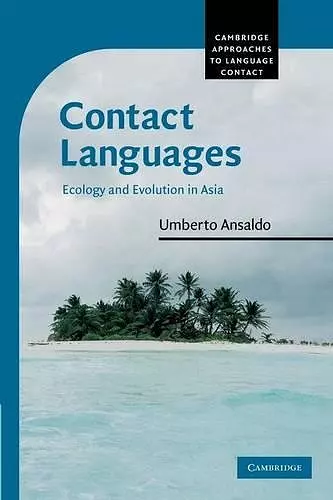Contact Languages
Ecology and Evolution in Asia
Format:Paperback
Publisher:Cambridge University Press
Published:22nd Aug '13
Currently unavailable, and unfortunately no date known when it will be back
This paperback is available in another edition too:
- Hardback£100.00(9780521863971)

This book explores the social and structural dynamics that underlie the creation of new, or restructured, grammars.
This book explores the social and structural dynamics underlying the creation of new, or restructured, grammars, offering an evolutionary account of contact language formation in the linguistic ecology of Monsoon Asia, including contacts between languages and peoples of Malay, Chinese, Portuguese and English origin, before, during and after Western colonization.Why do groups of speakers in certain times and places come up with new varieties of languages? What are the social settings that determine whether a mixed language, a pidgin or a Creole will develop, and how can we understand the ways in which different languages contribute to the new grammar? Through the study of Malay contact varieties such as Baba Malay, Cocos Malay and Sri Lanka Malay, as well as the Asian Portuguese vernacular of Macau, and China Coast Pidgin, this book explores the social and structural dynamics that underlie the fascinating phenomenon of the creation of new, or restructured, grammars. It emphasizes the importance and interplay of historical documentation, socio-cultural observation and linguistic analysis in the study of contact languages, offering an evolutionary framework for the study of contact language formation - including pidgins and Creoles - in which historical, socio-cultural and typological observations come together.
'Ansaldo offers a detailed and highly informative historical account of trade and power relations in the region … [this book is] very suitable for beginners as well as specialists, and I would certainly recommend it as a secondary textbook for students of linguistics and related areas.' Languages in Contrast
ISBN: 9780521682534
Dimensions: 229mm x 152mm x 14mm
Weight: 370g
276 pages